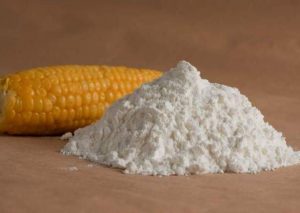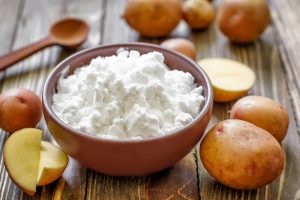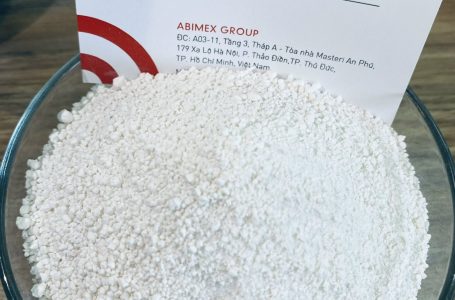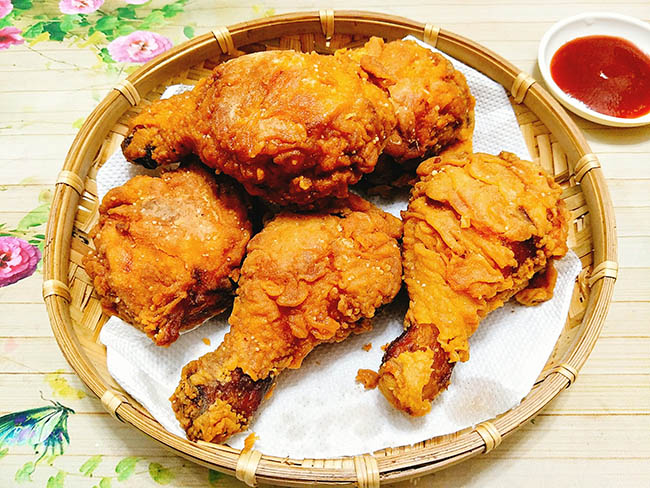
Tapioca flour, or tapioca starch, is a popular, gluten-free flour made from the starch of cassava root.
It’s perhaps best known for the thick, chewy texture it lends to gluten-free baked goods but also works well as an allergy-friendly thickener for sauces, soups, puddings, and stews.
If your recipe calls for tapioca flour but you have run out, you can use several alternatives.
Here are 6 of the best substitutes for tapioca flour.
1. Cornstarch
Corn starch makes a great replacement for tapioca flour and is easily accessible. In fact, you may already have some in your pantry or cupboard.
Cornstarch is naturally gluten-free, which makes it particularly suitable for gluten-free cooking and baking.
It has a much stronger thickening capacity than tapioca flour, so you need to cut the amount in your recipe by about half. For instance, if your recipe calls for 2 tablespoons of tapioca flour, use only 1 tablespoon of cornstarch as a substitute.

2. Cassava flour
Cassava flour is a great gluten-free substitute for tapioca flour and contains more fiber, making it a more nutrient-dense option.
Both products are made from cassava roots, but cassava flour incorporates the whole root, whereas tapioca flour is made up of only the starchy part of the plant.
In most recipes, cassava flour can be swapped evenly for tapioca, but the fiber content gives it slightly more thickening power.
Thus, if your recipe calls for any additional thickeners or gums you may want to reduce or eliminate them when using this particular substitute.
Cassava flour also has a slightly nutty flavor that may be noticeable, depending on the type of recipe you’re using.

3. Potato starch
Potato starch is gluten-free and can replace tapioca flour. However, it has a heavier consistency and may result in a denser product, depending on what you’re cooking.
If you’re using a small amount to thicken a sauce or stew you can simply swap it in a 1:1 ratio.
If you’re using a larger quantity for something like a baking mix, there’s a little more guesswork involved.
Try taking the amount of tapioca flour your recipe calls for and reducing it by about 25–50%. Replace the tapioca with this quantity of potato starch and add in a little extra of any other flour-like ingredients to make up the difference in total volume.

4. All-purpose flour
All-purpose flour can replace tapioca flour in a 1:1 ratio in most recipes, though the texture may differ depending on what you’re using it for.
Tapioca flour creates a bright, glossy finish when used as a thickener for gravies, soups, and sauces. The same dishes thickened with all-purpose flour will take on more of a matte finish and duller color.
You probably need to adjust your cooking time, too.
Tapioca flour is flavorless and mixes quickly, but all-purpose flour needs to cook a little longer to get rid of the powder-like texture it has when it’s raw.
Keep in mind that all-purpose flour is made from wheat and contains gluten. Therefore, it’s an unsuitable replacement for tapioca if you’re trying to keep your recipe gluten-free.
5. Arrowroot
Arrowroot is a flavorless, gluten-free flour made from the Maranta arundinacea plant. It’s very similar to tapioca flour and may be substituted in a 1:1 ratio for most dishes.
Arrowroot is a great stand-in for tapioca flour when used as a thickening agent or as part of a baking mix that includes other types of starches and flours.
However, it doesn’t create the same chewy consistency as tapioca when used as a stand-alone flour.
Thus, if your baked-good recipe calls for tapioca flour as the only starch, arrowroot will not make a good replacement unless it’s used alongside a combination of other flours.
6. Rice flour
Rice flour makes for another good gluten-free alternative to tapioca flour.
It’s made from finely ground grains of rice and has a very mild flavor that will not compromise the taste of your final product.
Rice flour can be stickier and has a stronger thickening capacity than tapioca flour, which means you may need to adjust your recipe a little.
A good rule of thumb is to use about half as much rice flour as you would tapioca. For example, if your recipe calls for 2 tablespoons of tapioca flour, use only 1 tablespoon of rice flour to replace it.
The bottom line
Tapioca flour is a popular ingredient for gluten-free baking and cooking.
If you don’t have any on hand, you have several viable replacements to choose from.
You may have to make minor adjustments to your original recipe to accommodate for the substitutions, but the experience will put you one step closer to becoming an expert gluten-free chef.
Still, if you prefer to use the real deal, stock up on tapioca flour.








